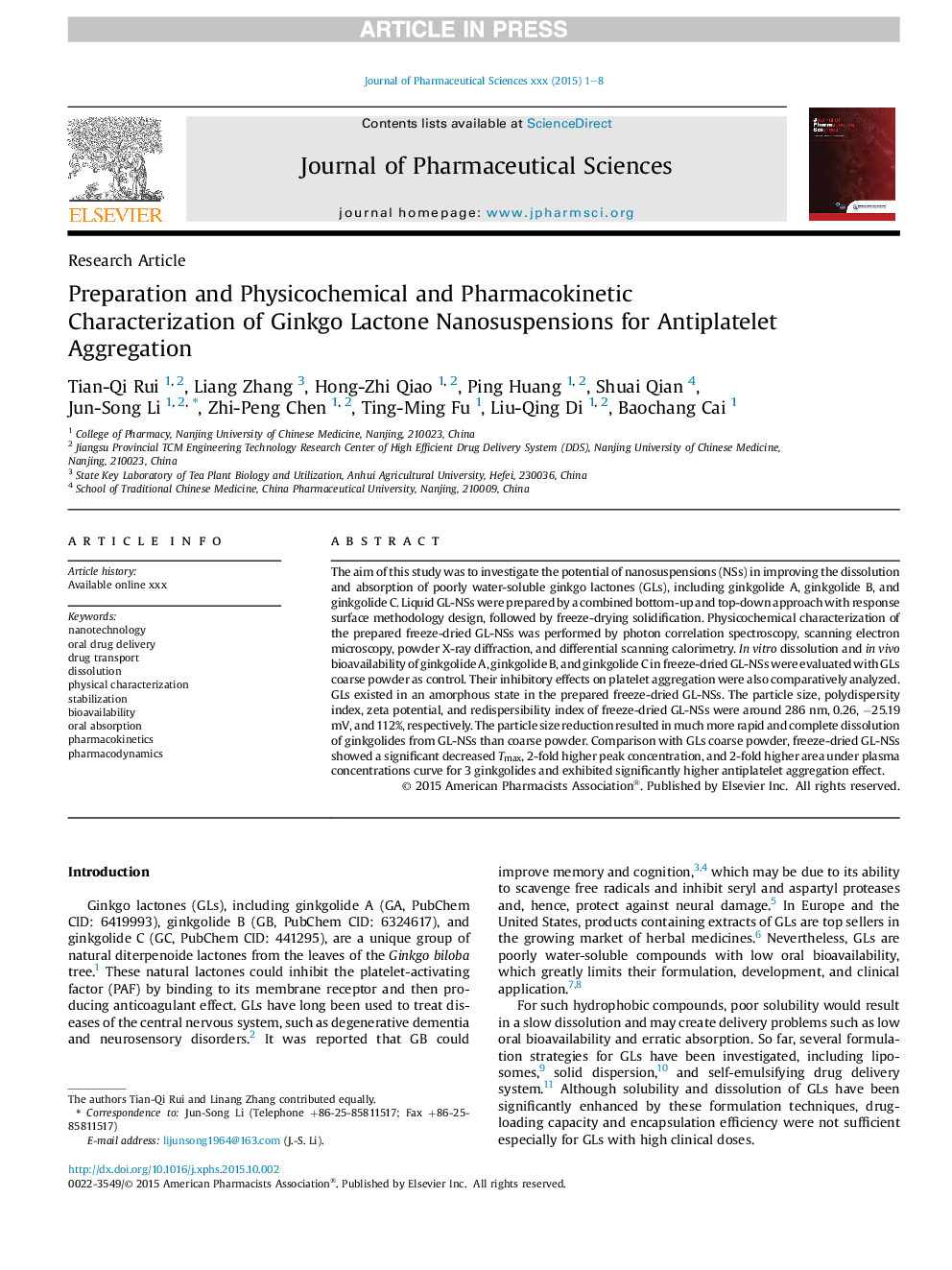| Article ID | Journal | Published Year | Pages | File Type |
|---|---|---|---|---|
| 2484458 | Journal of Pharmaceutical Sciences | 2016 | 8 Pages |
Abstract
The aim of this study was to investigate the potential of nanosuspensions (NSs) in improving the dissolution and absorption of poorly water-soluble ginkgo lactones (GLs), including ginkgolide A, ginkgolide B, and ginkgolide C. Liquid GL-NSs were prepared by a combined bottom-up and top-down approach with response surface methodology design, followed by freeze-drying solidification. Physicochemical characterization of the prepared freeze-dried GL-NSs was performed by photon correlation spectroscopy, scanning electron microscopy, powder X-ray diffraction, and differential scanning calorimetry. In vitro dissolution and in vivo bioavailability of ginkgolide A, ginkgolide B, and ginkgolide C in freeze-dried GL-NSs were evaluated with GLs coarse powder as control. Their inhibitory effects on platelet aggregation were also comparatively analyzed. GLs existed in an amorphous state in the prepared freeze-dried GL-NSs. The particle size, polydispersity index, zeta potential, and redispersibility index of freeze-dried GL-NSs were around 286 nm, 0.26, â25.19 mV, and 112%, respectively. The particle size reduction resulted in much more rapid and complete dissolution of ginkgolides from GL-NSs than coarse powder. Comparison with GLs coarse powder, freeze-dried GL-NSs showed a significant decreased Tmax, 2-fold higher peak concentration, and 2-fold higher area under plasma concentrations curve for 3 ginkgolides and exhibited significantly higher antiplatelet aggregation effect.
Keywords
Related Topics
Health Sciences
Pharmacology, Toxicology and Pharmaceutical Science
Drug Discovery
Authors
Tian-Qi Rui, Liang Zhang, Hong-Zhi Qiao, Ping Huang, Shuai Qian, Jun-Song Li, Zhi-Peng Chen, Ting-Ming Fu, Liu-Qing Di, Baochang Cai,
